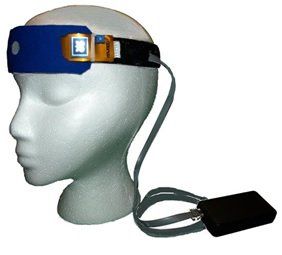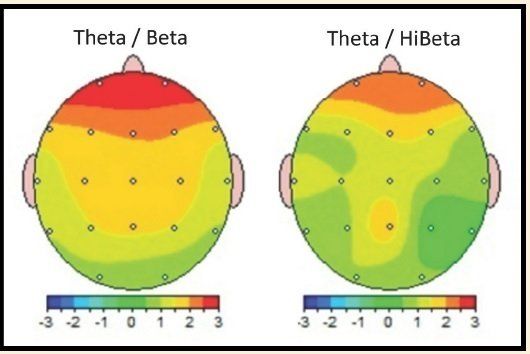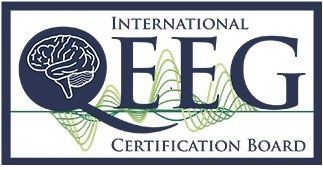
HEG-NIR (Hemoencephalography-Near Infrared Neurofeedback
Works with Atlantis 3.7 Software (free to all BrainAvatar Atlantis users)


Hemoencephalography neurofeedback has sensors that measure frontal lobe metabolism, information about frontal lobe oxygenated blood, and feedback to the trainee. One definition of this treatment is as follows: Hemoencephalography (HEG) is cortical circulatory biofeedback using refracted light tuned to oxygenated hemoglobin, emitted into the skull and detected at the scalp using a photoelectric cell. Red light at 660 nm is used as the probe, with changes in the returning refracted light representing changes in cortical circulation. (Mize, 2004) The HEG neurofeedback provider focuses training in the prefrontal cortex; the Velcro headband needs to be swiveled.
HEG neurofeedback is ideal for the child with facial tics plus anterior EEG slowing. Such a child can train at the frontal poles with eyes open and under task. HEG neurofeedback may require fewer training sessions than EEG neurofeedback to improve executive functioning (Toomim, 2002). Among the symptoms of poor executive functioning in the prefrontal lobes are inattention, poor planning or judgment, slow reaction time, lack of social awareness, and poor impulse control. HEG neurofeedback training is a simple, straightforward way to manage prefrontal slowing. It is minimally affected by muscle artifact and has already proved itself to be an effective form of neurofeedback. However, when it comes to sites located within the hairy regions of the scalp, problems with specific frequencies, fast-wave dominance, coherence, and asymmetry, as well as the need for deep relaxation, require EEG, not HEG, neurofeedback.
Demos, John N.. Getting Started with EEG Neurofeedback (Second Edition) (p. 253). W. W. Norton & Company. Kindle Edition.
Purchase HEG-NIR click HERE

